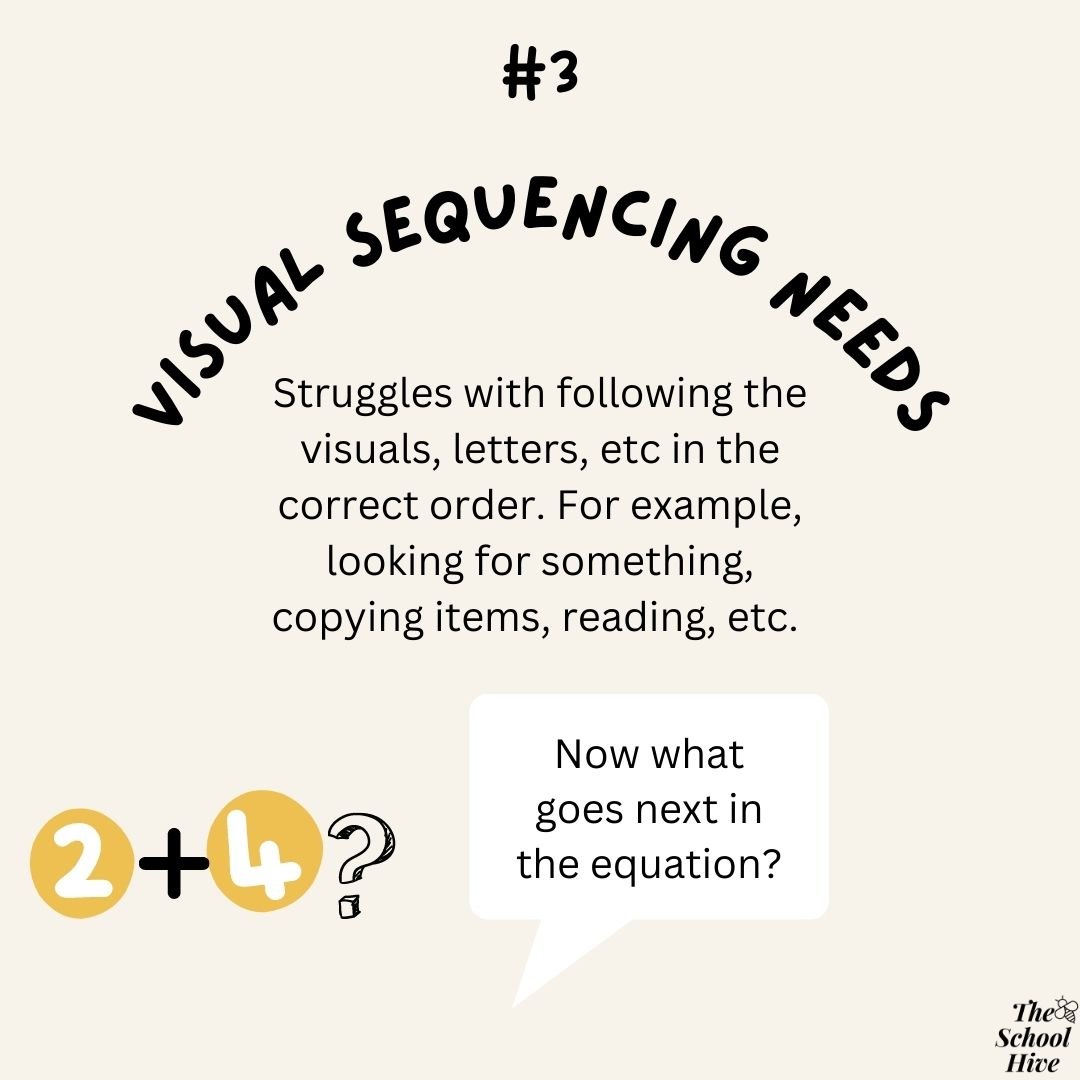The 8 Types of Visual Processing Disorders
The beauty of education is that no matter how much you learn about something, there is always more to knowledge to devour. When I set out to research and create the Umbrella of Need I had no clue that there was eight different types of visual processing disorders (VPD). It wasn’t until I started to dig deeper for my blog that I realized just how diverse visual processing can look like (no pun intended). In this blog post, I am going to break down what the 8 types of visual processing needs may look like with students in your classroom as well as provide definitions for them based off of Churchill Center & School research and information:
Visual Discrimination Needs
Visual discrimination is a students ability to determine the differences between things (theottoolbox.com). Some of these things could be color, position, pattern, texture, size, etc. These skills tend to be worked on a lot during a students foundational academic time when they are sorting things by color/size, playing by touch in their environment, and then ultimately when they start to categorize items further down the road. In real-life, this could look simply as someone who ends up leaving the house in two different colored shoes.
According to Happe (2013), figure-ground discrimination is when a student struggles with the ability to seperate elements from a background. A real-life example of this would be “noisy” or “busy” flyers, presentations, posters, etc. that may have too much going on or colors that are similar in background and text, like the one on the left:
Visual Sequencing is how someone is able to remember visual details in the correct sequence (ot-mom-learning-activities.com). This can be tied to a lot of academics from :
-Remembering symbols/order within mathematics
-The sequential order of what happened in a book the student was reading
-Effect spelling and remembering the order of the letters
-Copying from a board a math problem in class
-Working to complete DNA sequencing problems in science
If a student is struggling with visual-motor integration they will have a hard time accurately perceiving visual information, processing it, and then reacting and/or moving their body/hands based on their information (Center for Vision Development). This could look like bumping into things or messy writing that falls out of the lines.
Long or Short term visual memory refers to students struggling with remembering what something looks like (BrainBalance). If a student is struggling with remembering a visual short therm that could then affect their ability to transfer it to their long term. In my teaching career I tend to see students in special education struggle with remembering the names of visuals like shapes, toys/animals, math symbols, etc. This can look different for every student depending on their needs and interests.
Visual-Spatial Processing is a students ability to tell where objects are within space (understood.org). This can come up a lot when getting into higher level thinking math courses but is also something we do within our everyday lives from playing on the playground to tying our shoes.
Visual closure helps students be able to identify an object even if only part of the object is visible (somersschools.org). Puzzles are a great example of this. Some students may struggle with being able to guess what a visual is if there are missing pieces to it. To take it another step this could be similar when analyzing visual information, if they are missing a piece they may struggle with finding the answer.
The last and probably easiest visual processing disorder is letter/symbol reversal. This is simply when a student gets very similar looking letters and numbers confused. For example, B for D or W for M.
I hope this post informed you on the 8 visual processing disorders and gave you some starter examples of what this may look like with your students. Make sure to subscribe to our email list below as I do a deep blog post on each one and research resources to help with the 8 specific visual needs.
Until next time,
Happy Learning :)












